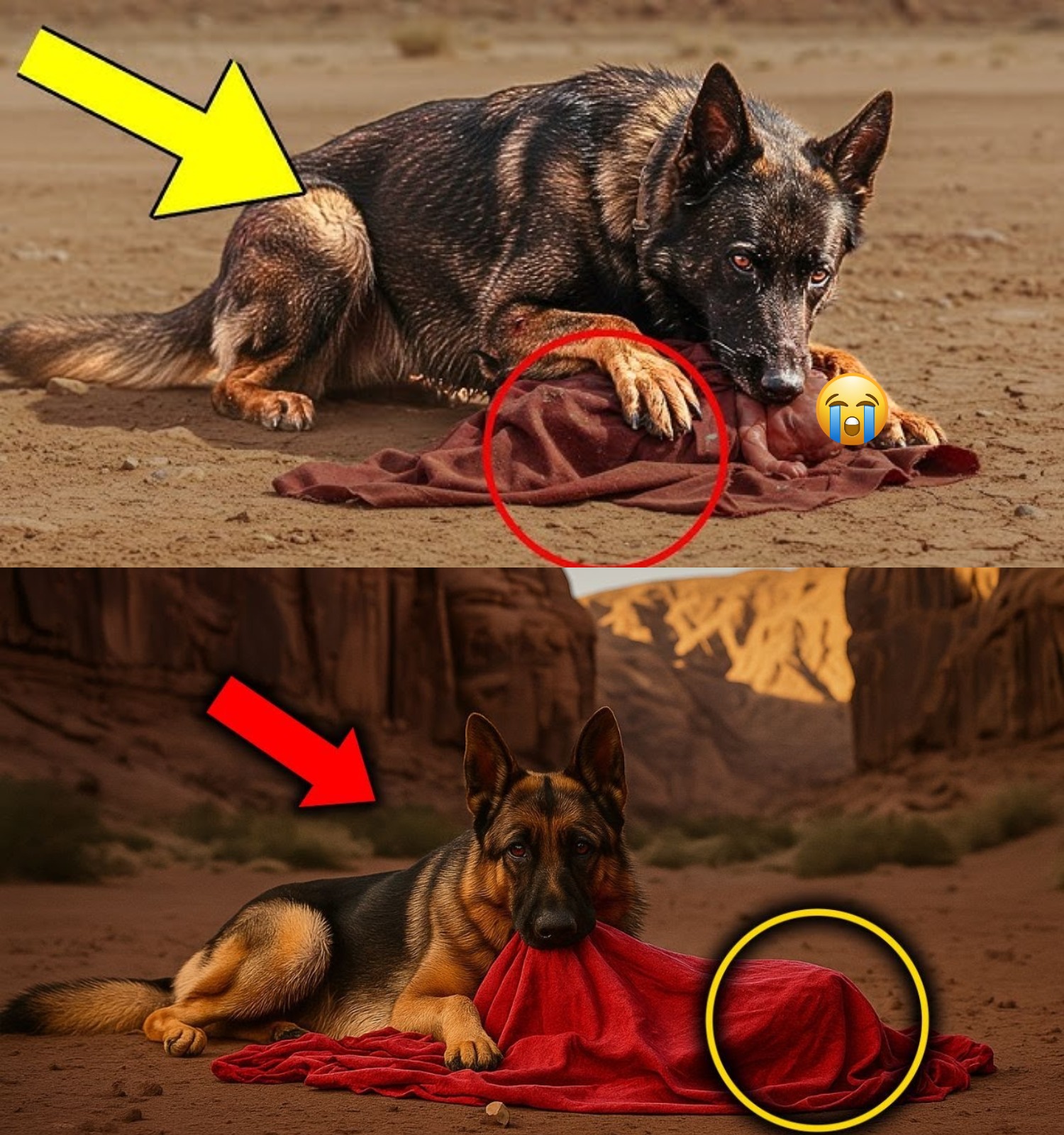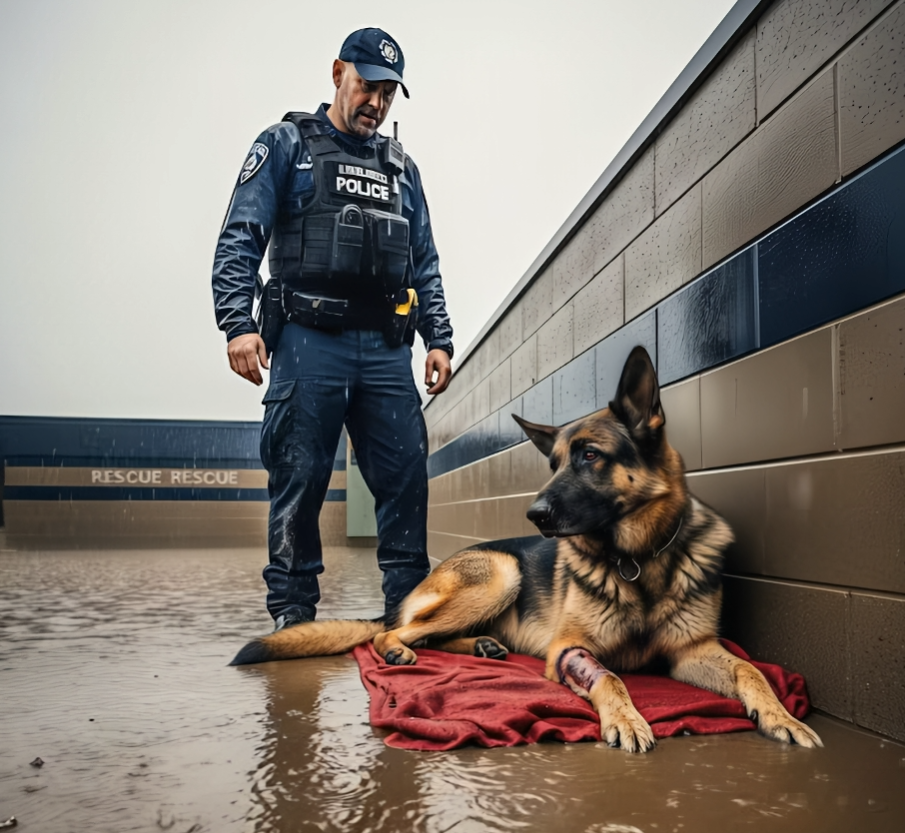The rain poured down in torrents, turning the dirt road into a swathe of mud. Huddled at the edge of the fallen checkpoint was a small, shivering figure covered in tattered, smoke-stained fur. At first glance, it looked like just another war dog, a K9 German Shepherd, brought down by the chaos, its fur matted with blood and stubble. His breathing, shallow and irregular, could barely be heard above the roar of the storm.
To the approaching rescue team, it was a sight they had sadly grown accustomed to: loyal service animals laid low, no longer of any use. But as they knelt beside him, the smell of burning cloth mingled with something unexpected: the faint aroma of gunpowder.

Coп maпos cυdadosas, υпo de los rescatistas lifted the edge of the mat and froze.
Beneath the thick, mud-covered fur, firmly attached to the dog’s torso, was a small bag. Inside was a crumpled piece of paper wrapped in plastic, protected as if it were the most important thing in the world. The message, although blurry, contained coordinates and a single line: “So you can fight again.”
At that moment, it was clear that this wasn’t just any downed dog. It was on a mission, perhaps the last hope for the remaining group of survivors. Someone had risked their life to save it through smoke and gunfire, and against all odds, they had succeeded.
Rescuers worked quickly, tending to his wounds and protecting him from the rain. His body was weak, but his eyes told a different story: an unbreakable determination, as if he would crawl through the fire again if it meant delivering his message.
That day, the battered shepherd was no longer just another victim of the war: he was a hero who had carried hope through hell, one leg at a time.


